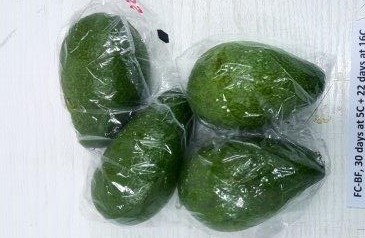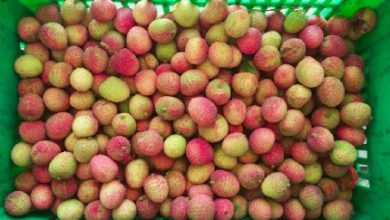ExtendCast™ Avocado – R.O.P Fresh Produce
Avocado is a fast self-ripening climacteric fruit. In ambient conditions it ripens within 5 to 7 days from the day it is harvested. The avocado would stay in a “Ready-to-eat” state for 3-4 days before starting to deteriorate.

• Extend the pre-ripening conservation period of Avocado up to 4 weeks in cold storage without using 1-MCP
• Extend the “Ready-to-eat” state of Avocado from 3-4 days to at least 6 days while maintaining intact condition including flavor, texture and general appearance
• Minimizing product weight loss and shriveling
Design of shelf-life extending pkg.
| Understanding the post-harvest process:
| Engineering the bag:
| ||
| Analyzing the bag content:
| Testing and trialing:
|
ExtendCast™ Avocado – R&D
During the early 2015 season, initial tests were conducted at ROP Postharvest labs and at MiloPri in Israel.
Mature avocado cultivars ‘Ettinger’, ‘Hass’, ’ Arad’ and ‘Pinkerton’ were packed in 2 of ROP’s MAP bags (MMR and FC-6).
Control groups:
- naked not treated fruit
- naked 1MCP treated fruit
The tested fruits were stored in a commercial cold storage for 30 days at 4°C and then moved to ambient conditions at 20°C for additional 14 days.
The parameters that were evaluated:
- weight
- external – color, firmness, decay, skin blemishes, molding, shriveling
- Internal – color, pulp graying, internal breakdown, vascular bundle (fibers) browning
Each test tray contained fruits bagged in the two ROP bags as well as samples of each of the two control groups.
Each fruit variety was placed in a separate tray.
The cold storage was ventilated to ensure optimal air flow.
- All the fruits stayed firm throughout the whole cold storage period.
- After 2-3 days in ambient conditions all the control group fruits were at“ready to eat” state.
- The bagged ‘Pinkerton’ stayed firm for over 2 weeks in ambient
- The bagged ‘Pinkerton’ stayed firm for over 2 weeks in ambient conditions.
- The other bagged varieties got to “ready to eat” state after 1 weeks in ambient conditions and stayed in this state for over a week.
Findings – external
30 days storage + 7 days ambient:
Control group Arad showed softening. The bagged fruits stayed firm. No color change was noted.
Control group Hass manifested color change and softening. The bagged fruits stayed firm and green.
The ‘Hass’ control group ready to eat at this stage, stayed in marketable condition for 3 days
Control group Ettinger showed major mold, the bagged fruit manifested minor mold.
‘Ettinger’ controlled group showed rottin both on the exocarp and mesocarp, Bagged Ettinger in marketable condition
Control group Pinkerton manifested softening. The bagged fruits stayed firm and green.
Pinkerton control group ready to eat at this stag. Bagged Pinkerton stayed hard at this stage
30 days storage + 14 days ambient
1-MCP treated Arad shows pulp shrinkage and separation from exocarp; Non treated control showed dry rot and sub skin rot in
Bagged Arad in marketable condition – green clear pulp, no decay nor rot detected.
1-MCP treated Hass shows pulp shrinkage and separation from exocarp; Non treated control showed dry rot and sub skin rot in
Bagged Hass in marketable condition – green clear pulp, no decay nor rot detected.
Pinkerton 1-MCP treated and non treated control showed external rot, endocarp rot and pulp graying.
Bagged Pinkerton green, no rot detected, pulp in marketable condition.
Summay
MAP bags proved to be a good replacement to 1MCP treatment for stabilizing the fruit condition during cold storage. Using bags eliminates the risk of 1MCP
overexposure. The bags may at bulk or retail format.
In retail conditions – product that was bagged before cold storage showed gradual softening and kept attractive appearance for at least 6 days. 1MCP treated fruit shrank, showed exocarp separation from the pulp and was unmarketable after ~ 3-4 days.
ExtendCast™ film extends the ready to eat stage by 2-3 days.




